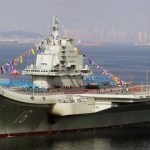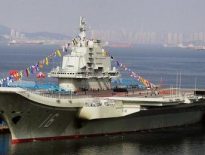(Reuters) – Four hundred meters below the surface dozens of miners risk their lives at Sardinia’s Carbosulcis, Italy’s only coal pit, digging low-quality carbon that no-one wants to buy.

In nearby Portovesme, workers at the country’s largest aluminum smelter are fighting for their jobs after high energy bills, tight EU regulation and falling aluminum prices prompted U.S. commodity giant Alcoa to leave Italy.
With more than 1,000 jobs at risk, the industrial crisis hitting the impoverished Mediterranean island of Sardinia is a political hot potato for technocrat Prime Minister Mario Monti as he fights to keep costs down and contain Italy’s high debt.
A protest by Sardinian workers in Rome this month turned violent and the government is wary of letting tensions rise to boiling point in the run-up to general elections in the spring.
In both cases the solution appears to be an old Italian remedy for its poor southern regions: the state will help.
“This is a whole system that has gone belly up: the mine, the aluminum, everything,” said a government source with direct knowledge of the situation.
“The state must put in the money because Sardinia cannot produce it. These industries have not led to the creation of a genuine business landscape and the coal is rubbish. But we cannot let people starve.”
The crisis that is engulfing the island, and in particular the south-western Sulcis area where the smelter and the mine are based, has reopened the debate about whether it makes sense to keep certain industrial sites in southern Italy on life support.
Last year, carmaker Fiat caused a stir when it shut its Sicilian Termini Imerese plant citing the high costs of transporting goods in and out the island. And in Puglia, steel-maker ILVA is at risk of being shut down unless it can find a way to stop spitting its polluting fumes.
Despite repeated top-down attempts to develop industrial activities and create growth, the unemployment rate in the southern regions of Sicily, Sardinia, Campania, Calabria, Puglia and Basilicata is, at 17 percent, more than twice the jobless rate of Italy’s wealthier north, ISTAT data show.
In Sardinia’s poor Sulcis region, more than half of the active population is either looking for a job or has stopped looking for one, says local councilor Alberto Pili.
“Italy is paying the consequences of having chosen to use the funds of the Marshall Plan to launch heavy industry in the south in the aftermath of World War Two,” said Davide Tabarelli, head of specialized energy think-tank Nomisma Energia.
“It was the quickest way to bring development there. This is our original sin. That money looked like a godsend.”
With a population of 1.6 million, Sardinia makes up for around two percent of Italy’s gross domestic product.
AUTARCHIC DREAM
Fascist dictator Benito Mussolini, struggling under an international embargo, was the first to encourage large-scale use of Sardinia’s coal and in 1938 even founded a miners’ town. He named it Carbonia, Latin for ‘land of coal’.
The post-War Italian state made another big industrial push in the late 1960s and locals were happy to swap a life of rural hardship with the security of a regularly paid job.
“When I was hired, I thought I had hit the jackpot,” said 45-year old Giuliana Porcu, a safety official who has spent 25 years inspecting the pitch-black tunnels of the Carbosulcis mine and is the daughter of a miner.
Even though the Carbosulcis coal is too high in sulfur to be used at Italian power plants, an exemption allows the coal to be burnt at the giant Enel plant of Portovesme which in turns gives energy to the smelter and the surroundings.
At the peak of its glory, 10,000 sons of fishermen and sheep herders used to work in Portovesme compared to 3,000 today.
Two generations later, this industry threatens to leave behind little more than a forest of chimneys towering against Sardinia’s deep-blue sea.
The desolate landscape surrounding the Portovesme site contrasts with the clusters of factories and warehouses that dot Italy’s northern regions.
While Italy’s north enjoys a dense network of railways and highways are well developed, Sardinian roads are poor and the harbor of Portovesme is too small for large container ships.
ENERGY ISSUE
Italian power prices, often between 30 and 50 percent higher than the EU average, are a big deterrent for anyone wanting to produce primary aluminum due to the immense energy required.
With Alcoa set to leave Italy, the government is rushing to find a buyer for the smelter, which produces around 8 percent of Italy’s aluminum needs.
Rome hopes to lure Switzerland-based commodities giant Glencore, which already operates a nearby zinc and lead plant, by offering to keep energy prices at around 35-37 euros per Megawatt Hour for up to 15 years.
But the actual cost of power is around 70 euros/Mwr, so the difference will be met by taxpayers through their energy bills, government officials told Reuters.
This would effectively prolong the artificially low energy regime that had attracted Alcoa and other foreign investors to Italy during a privatization drive in the mid-1990s.
“The truth is that the Italian energy system is structurally weak. We do not have sufficient hydroelectric power and the system is overdependent on subsidies of all kind,” said Pili.
Switching to aluminum recycling, a widespread and much cheaper option in terms of energy needs, is not an option currently under consideration, government sources said.
While Rome rushes to save the smelter, Carbosulcis’ boss Mario Porcu is pushing for a daring project that envisages storing polluting carbon fumes 1,000 meters under the surface.
But with investments estimated at 1.5 billion euros, the project is hardly palatable for Rome as the euro zone crisis forces it to contain its 2 trillion euro debt mountain.
Porcu says some of the 6-billion-euro annual subsidies the state is pumping into renewable energy such as solar power could be diverted to support the project: “This is not meant to save the mine, but to develop technology.”
With the mine likely to be closed, the government is working on a state-funded project that would foster tourism and the creation of small companies in the region.
But fostering small businesses in an area scarcely populated and badly connected to the mainland has proved difficult, with only nine of 22 business projects partially financed by the Sulcis province still standing.
A conversion to tourism, thriving in other parts of Sardinia thanks to its pristine beaches, may not be easy nor quick as the area is heavily polluted. Tourism would also not guarantee a big rise in jobs nor help develop new technology.
“We are not married to aluminum. But with tourism alone, we cannot survive,” said Alcoa worker Lorenzo Fenu.
(Editing by Anna Willard)





